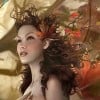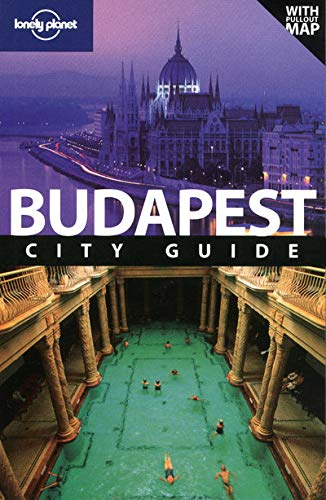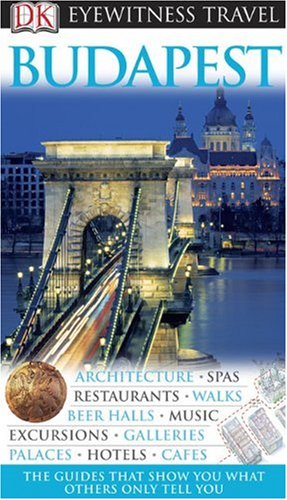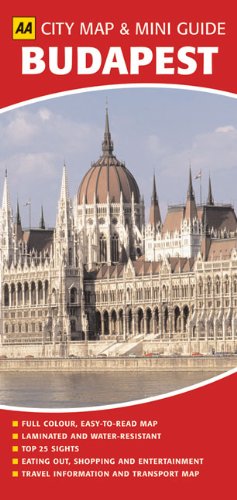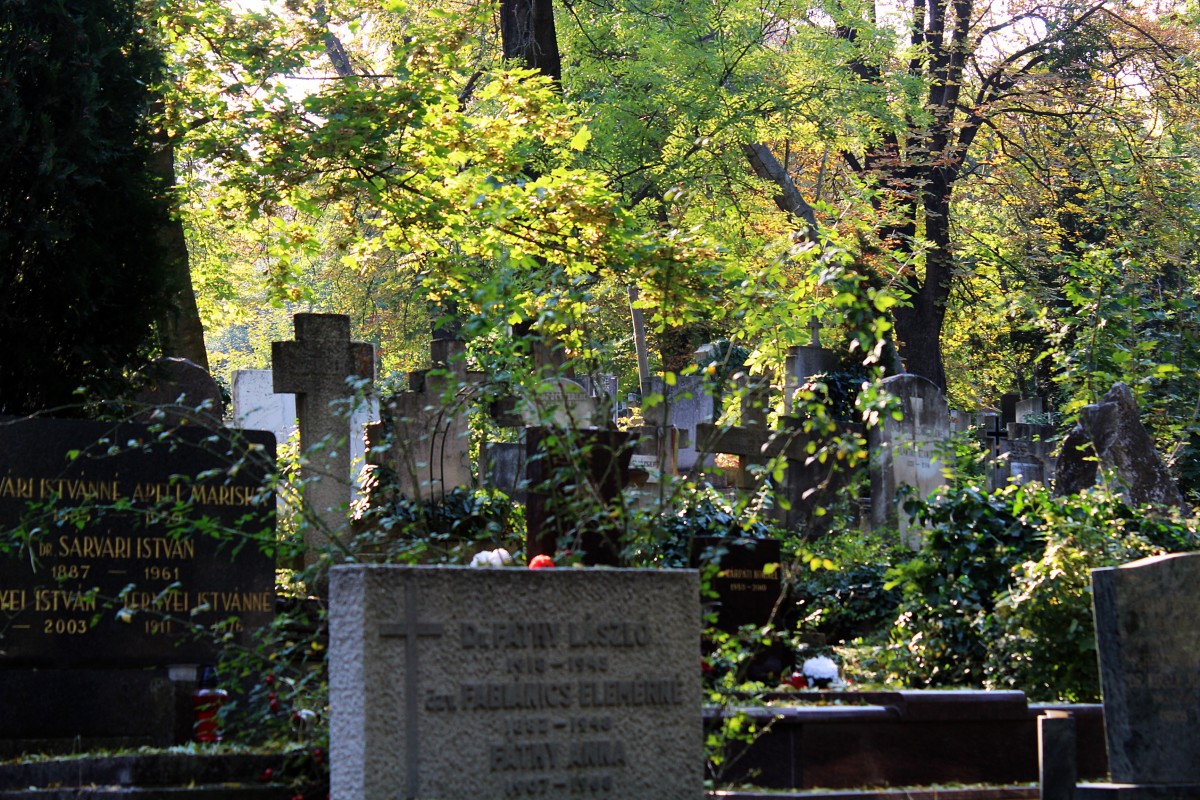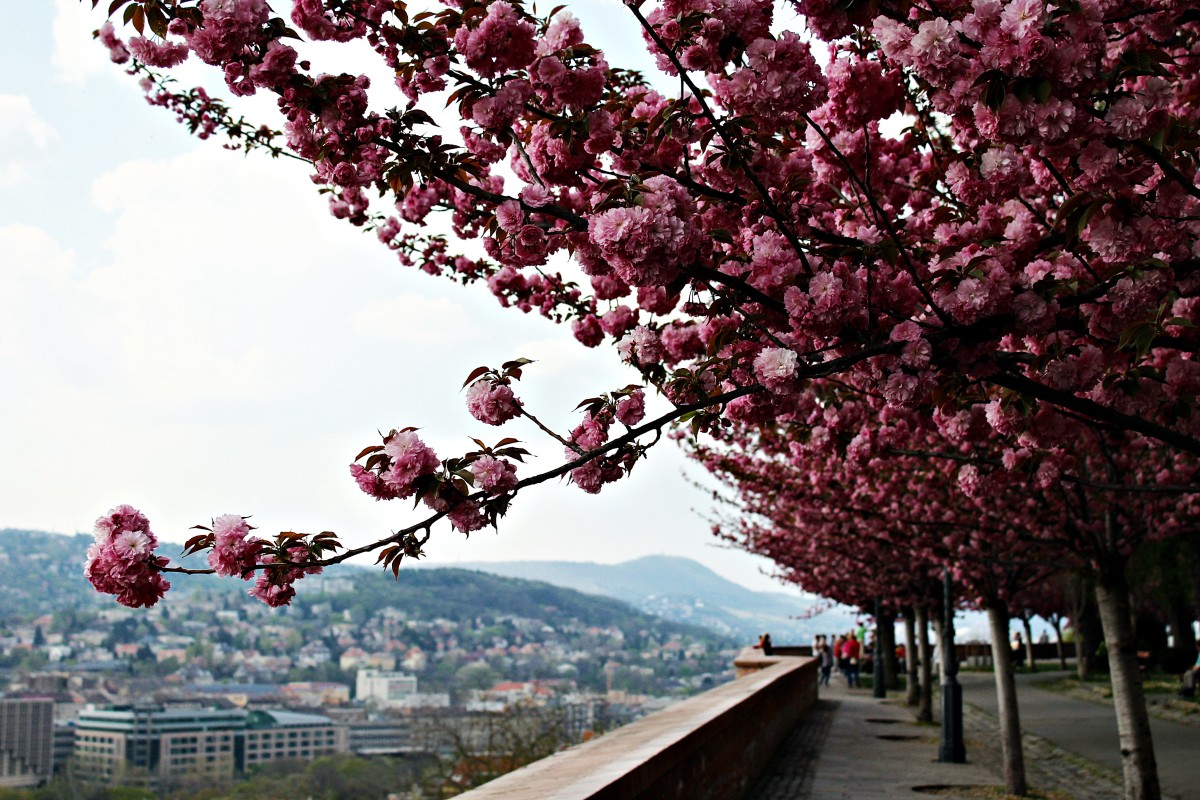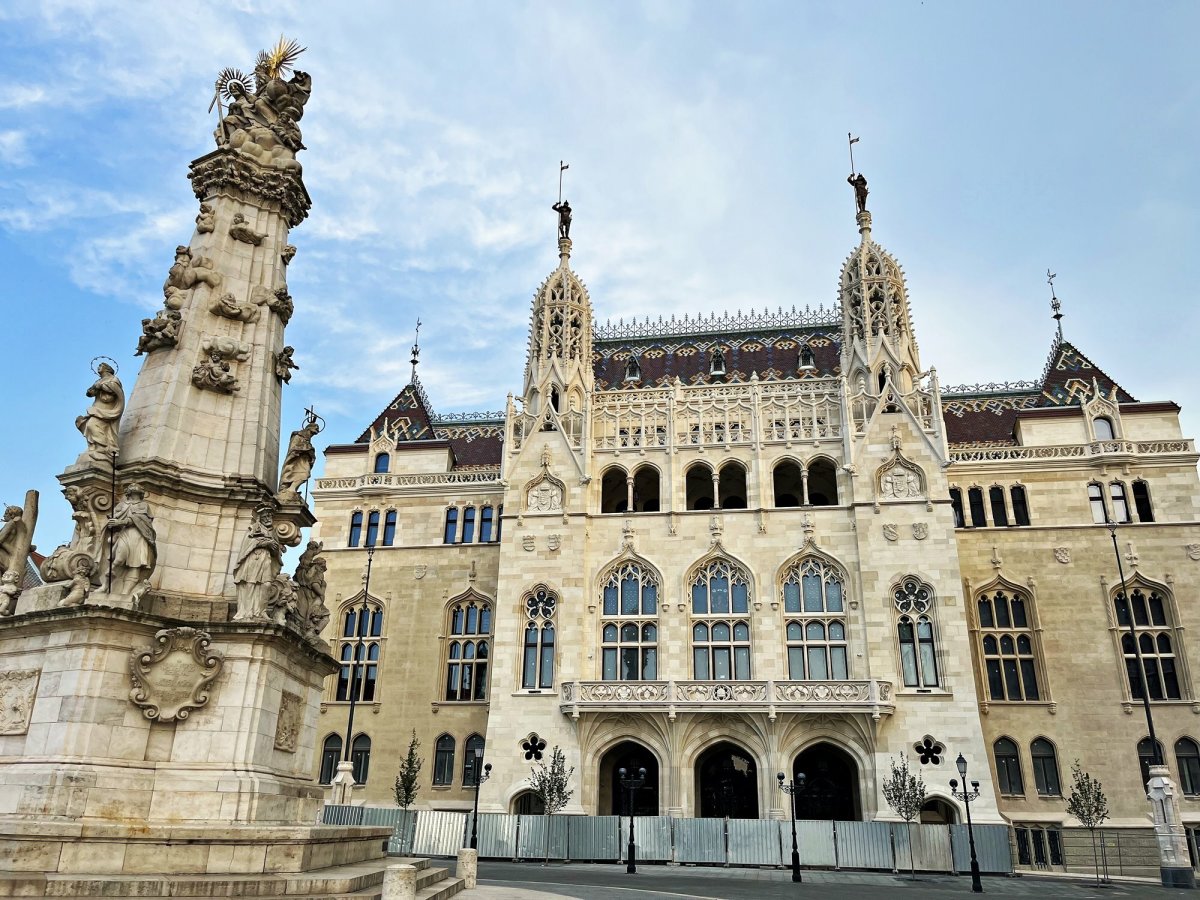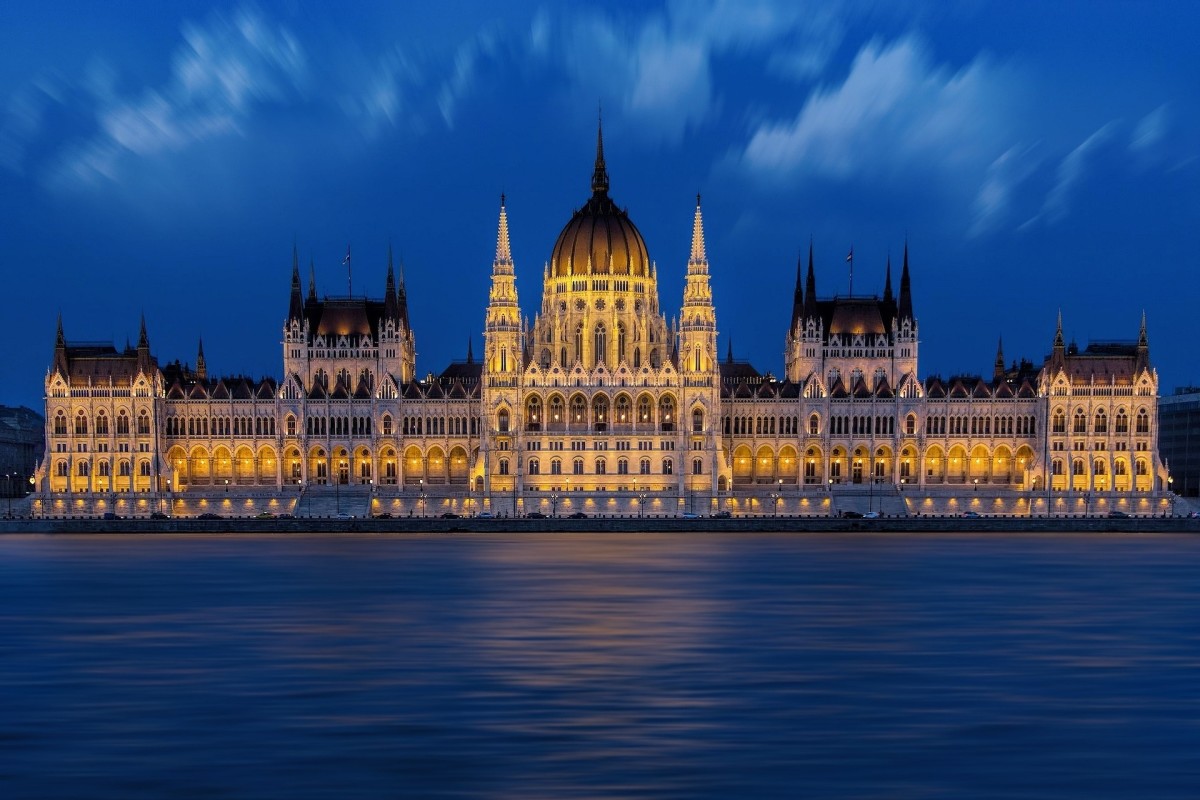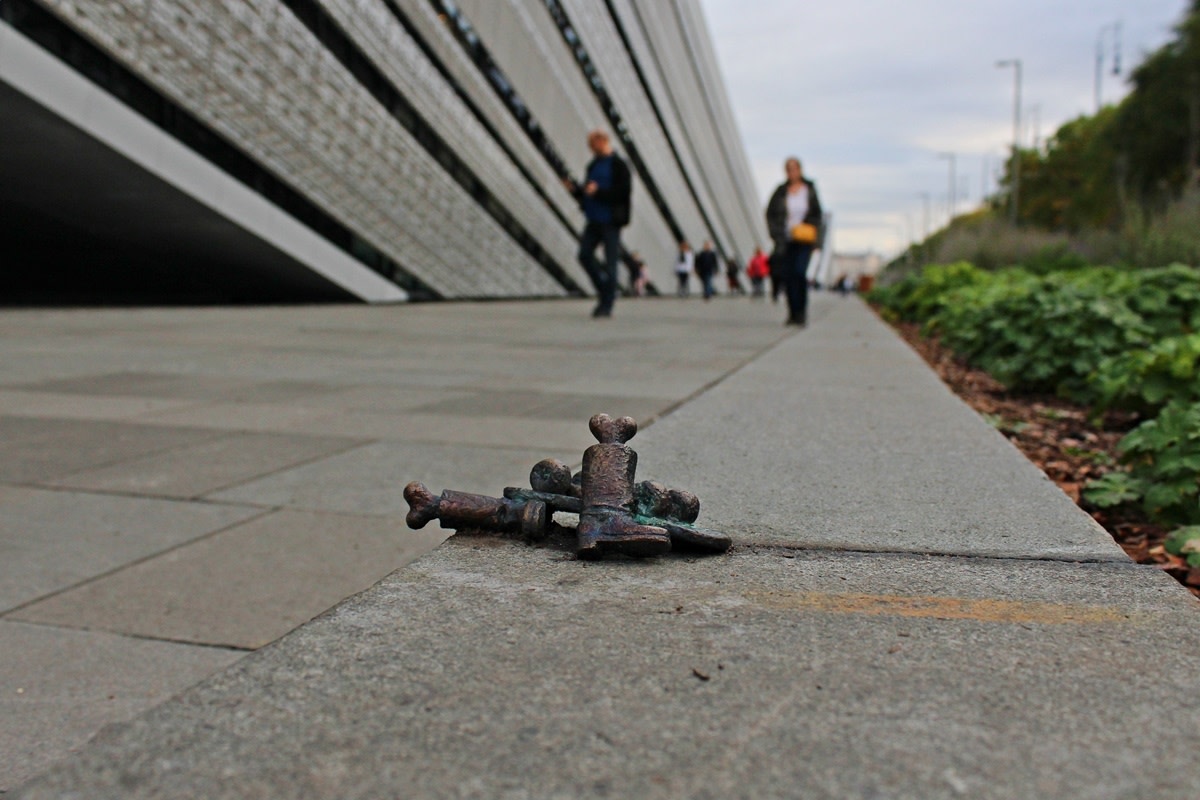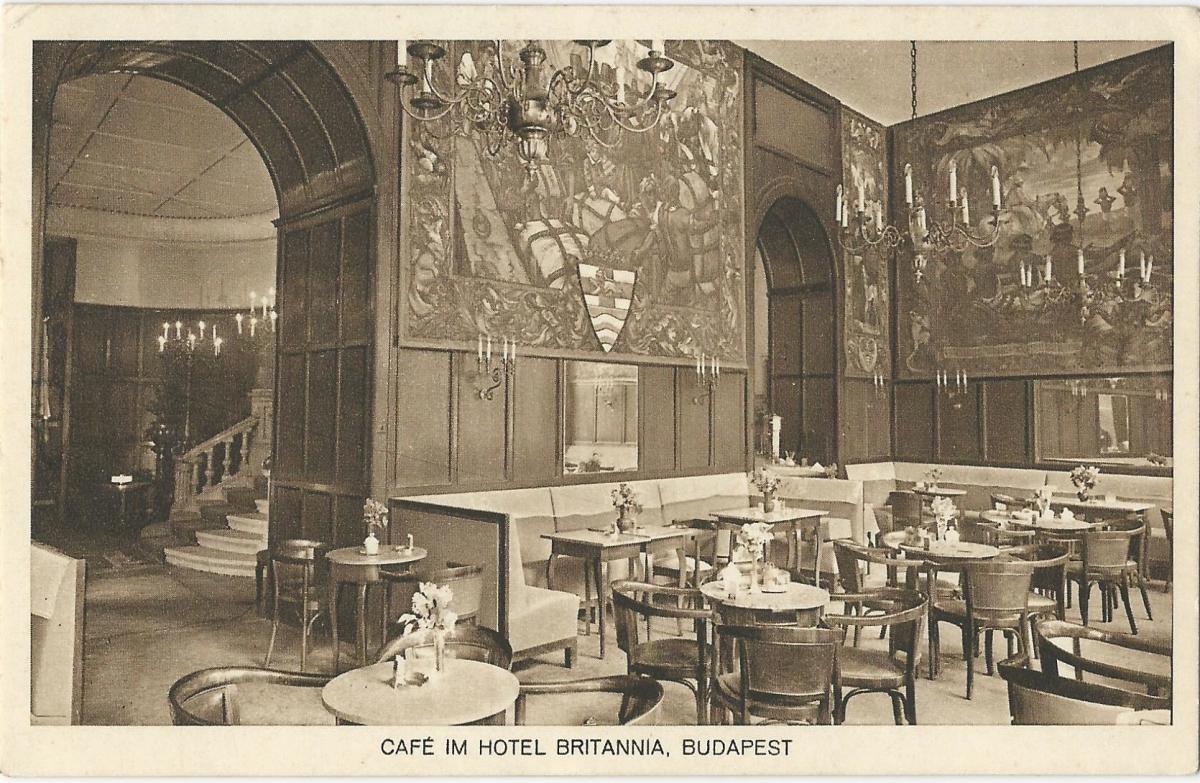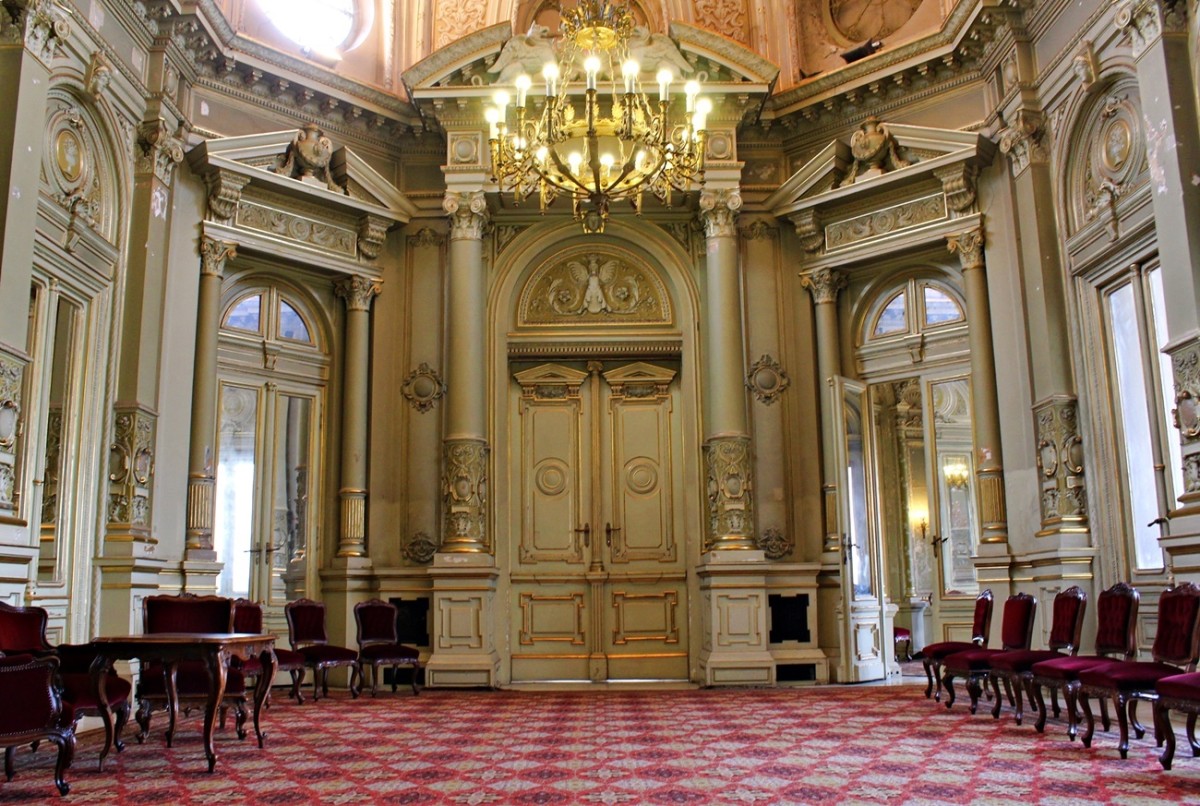Beautiful Budapest
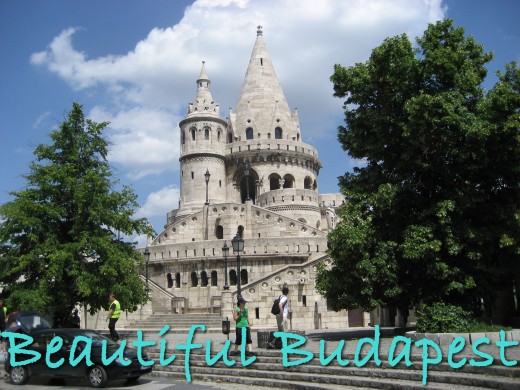
Lonely Planet guide of Budapest
Welcome to a virtual tour on Budapest!
Budapest is the capital of Hungary, that is a country located in Central-Europe.
The city is the 8th largest capital in the European Union. Because of its resemblance to Paris, tourists often call Budapest 'The Paris of Middle Europe'.
Budapest has many World Heritage sites and also many popular places that bring more than 20 million tourists each year to spend their vacation in this city.
If you are considering to come to Budapest sometimes, you are on the right page! You can find here loads of infos, like best places and programs in Budapest, so don't miss this lens! :)
In the first few modules you can read a brief tour guide about the city, and after those posts, you can find some more, longer description on certain parts and famous places of the city. I hope you will like it.
Useful links for visitors
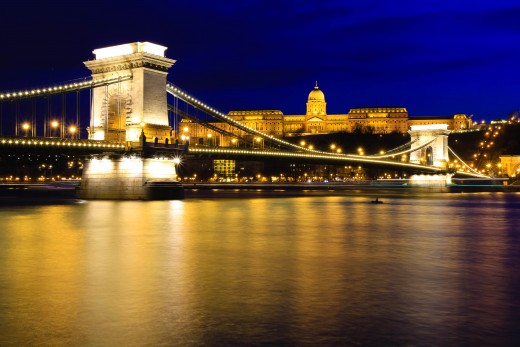
The development of the city
In 1873, the three cities, Buda, Óbuda and Pest were united under the name Budapest, which turned into one of the most rapidly developing metropolises in Europe. Embankments, railway stations, theatres, school and housing estates were built at a fast pace, as was the fine avenue called Andrássy street under the wooden covered surface of which ran the first underground railway on the Continent. Brightly lit cafés mushroomed up all over the city, the telephone network began to spread and the first automobile appeared in 1895.
The Millennium of the Magyar Conquest (in 1896) saw the construction of many opulent buildings. Vajdahunyad Castle, the Art Gallery, the Museum of Fine Arts, the Francis Joseph Bridge were all built in this period. Development continued at the same speed after the millennial celebrations. An elegant district with office buildings came into being in the Inner City. Neo-Classic houses flanked the Danube and the building of the Parliament was also constructed.
Development was first stopped be the 2nd World War and was further hindered by the economic crisis that followed the collapse of the Austro-Hungarian Monarchy. During the World War all the bridges on the Danube were blown up and during the last ditch-fights the bulk of the buildings in the city also perished.
In the spring of 1945, after the war, reconstruction started without any delay and again with great enthusiasm. It is thus a city - rebuilt and reborn after the disasters - that waits for and welcomes visitors from all over the world. From year to year more than 20 million tourists visit this great city.
Maps and guides of Budapest
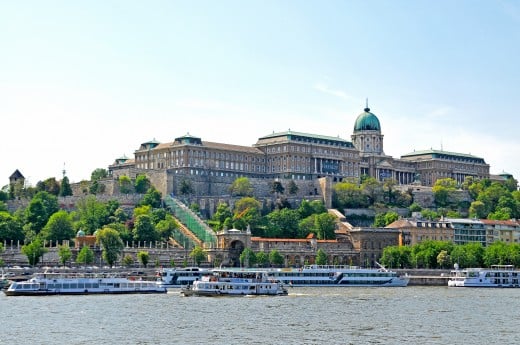
Top 10 things to see in Budapest
The story of the capital
Budapest is a popular and world-famous health resort. The advantage of thermal waters has already been discovered in the early Roman era. Therefore in the Roman period and later during the Middle Ages and the Turkish Occupation of Hungary bathing was very popular and many baths were built here.
In the 13th century, during the reign of King Béla IV the construction of the Castle of Buda began. The palace witnessed its Golden Ages under the reign of King Matthias Corvinus, the great ruler of Renaissance Hungary. The king extended and rebuilt the palace of his predecessors in an opulent style renowned all over Europe. Its library contained the King's world-famous collection, the so-called Bibliotheca Corviniana.
The medieval residence of Hungarian kings saw stormy centuries in the following periods. Turks demolished it, fires devastated it, the walls were hit by cannonballs and all the treasuries were ransacked. The little that remained was lost during the recapture of Buda in 1686.
The Baroque Era again witnessed an upswing in development. A huge building complex was erected in the middle of the 18th century for Queen Maria Theresa.
From the Compromise with the Habsburgs in 1867 until 1945 the Buda Castle was turned into an administrative district. It served as a residence of the king and emperor Francis Joseph I during his visits from Vienna.
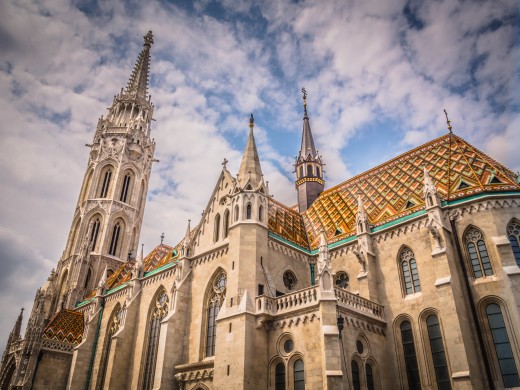
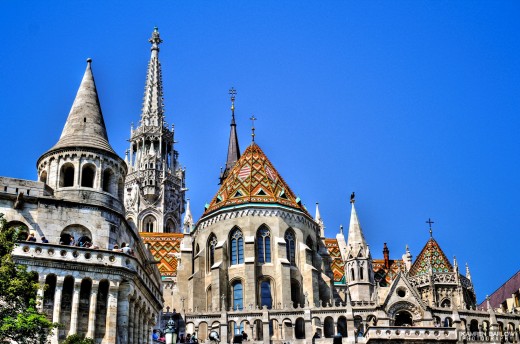
Budapest anno and now
- Budapest anno photo gallery
I hope you will find this gallery of pictures interesting. These are my favourite. The photos were taken decades ago and now... loads of changes in the city. - 70 Billion Pixels Budapest - The largest photo on Earth
Watch this unbelieveable photo taken in Budapest, Hungary! Click on a little picture underneath the photo and believe your eyes! I think it is wonderful and yet incredible.
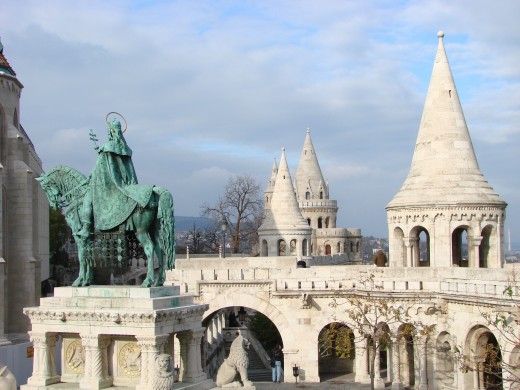
The castle district
The Palace was grandly rebuilt at the turn of the century on the occasion of the millennial celebrations, but was completely burnt down during World War II. But after these devastation, the Palace was rebuilt in a manner to preserve the early Gothic and Renaissance remains that came to light. The Castle District today is a tourist attraction and also a cultural center in the country with many architectural relics and buildings. The Castle gives place to three great museums and also to the National Library.
The Square of the Holy Trinity (Szentháromság tér) was the centre, the marketplace of medieval Buda. Next to the square we can find the Matthias Church that witnessed many important happenings during the years. For example Charles Robert was crowned here in 1309, deceased rulers were buried here and royal weddings were also held here. Paintings and stained glass windows of the interior part help to recall the significant events of Hungarian history.
Behind the Matthias Church there is the Fishermen's Bastion, one of the most famous lookout places of the capital. The neo-Romanesque building complex got its name after the guild of the local fishermen who - according to tradition - had their defense bastion on this place.
The contemporary network of streets in the Castle District follows the medieval structure of the district. It was a densely inhabited area where the houses of the rich burghers and aristocracy stood, together with some inns and shops of course. Since 1987, the Castle District of Buda is under the protection of the UNESCO, it is a World Heritage Site with its Gothic, Renaissance and Baroque buildings.
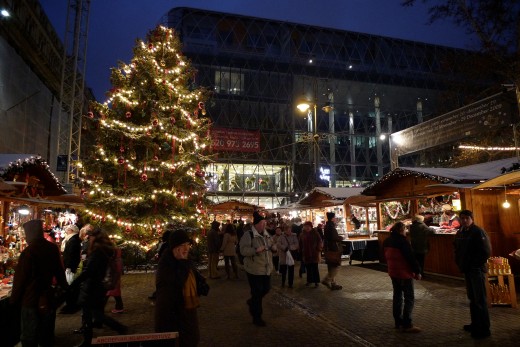
AA City map and guide on Budapest
Other must see places
The Margaret Island (Margit-sziget) - unique in the middle of a city - was a royal park of hunting for game (therefore its name was 'Island of Hares') under the reign of the Árpád-kings. The present name of the island dates back to the 13th century when the daughter of King Béla IV, Princess Margaret lived and died here in a nunnery. Margaret Island nowadays is a great recreational area with sports grounds, swimming pools and with limited traffic and protected flora.
The symbol of the historical Inner City of Pest is Váci street (Váci utca). This is one of the favorite places of the tourists and famous people who visit Hungary usually visit this place as well. Tourists can shop and stroll here together with local people and students from the nearby universities.
Visitors often say that Budapest is the 'Paris of Middle-Europe' because of its resemblance to that city.
The Váci street is enclosed by banks, commercial buildings, small boutiques, huge department stores and small, intimate cafés. At the end of the street there is a beautiful square named after a great Hungarian poet, Mihály Vörösmarty, whose statue stands in the middle of the square. On one side of this place stands the world famous Gerbeaud pastry shop, which is also liked by tourists. Each year in December visitors can found a huge Christmas fair here, on which one of the most popular programs is the Advent Calendar, that is 'placed' in the windows above the Gerbeaud shop. Every day at 5 o'clock p.m. (local time) a window is opened with some Christmas music played by talented musicians. This is an unforgettable experience for locals and for people from abroad as well. In the summer street musicians and portrait artists, actors accompanied by other showmen amuse the pedestrians.
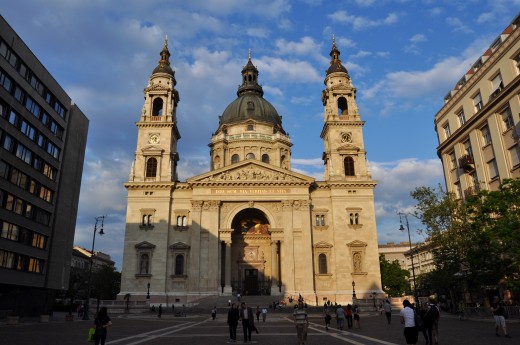
Danube, Parliament, Cathedral - a lovely city
Not too far from here stands the building of the Vigadó that gives place to many important events such as concerts, elegant balls and exhibitions from time to time. The small square in front of the building offers a fantastic panorama on the other side of the city, the Danube, the Gellért-Hill, the Buda mountains and the bridges of Budapest.
The main sight on the left bank of the Danube is the neo-Gothic building of the Hungarian Parliament, which is the centre of Hungarian administration since 1904 (more infos about the Parliament can be found in another module).
Another popular meeting place of the local residents is the Nyugati square (Nyugati tér or Nyugati pályaudvar), where we can find the Western Railway station of Budapest. The building of the station was built by Gustave Eiffel.
The Cathedral of St Stephen can be found not too far from Nyugati square. The building is also called the Basilica, which is one of the main centers of Catholic Church in Hungary. The interior of the building is a rich collection of late 19th century Hungarian fine art. Mosaics, altarpieces and statues can be found here, that are the works of Bertalan Székely, Károly Lotz, Gyula Benczúr, Árpád Feszty, Alajos Stróbl and János Fadrusz. A relic, the Holy Dexter of St Stephen - who was the first king and founder of the state of Hungary - can also be found in the building. Its name refers to its ecclesiastical rank and not to its architectural structure. Its construction was started by József Hild in 1851, but was finished by Miklós Ybl because of the death of Hild.
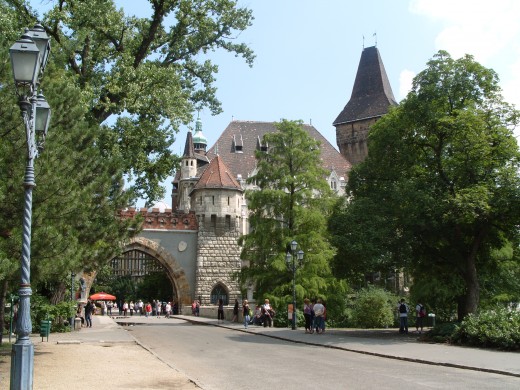
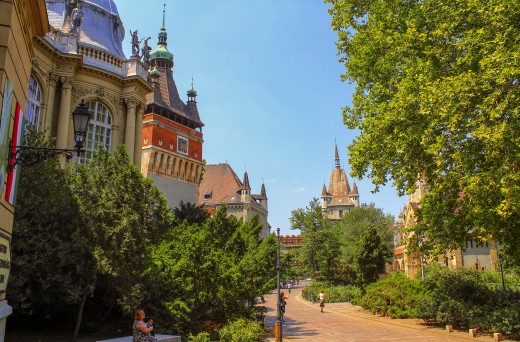
The Rough Guide to Budapest
And the most popular attractions
On the Metro line 3 tourists can reach a huge square called Deák Square (Deák tér) that is a popular meeting place as well. The neo-Classical Lutheran Church on the square with its huge vaulted roof structure was built by Mihály Pollack between 1799 and 1809.
The famous avenue, the Andrássy street starts from Deák square. A gem of this street is the Opera House built by Miklós Ybl. The building shows some resemblance to the Opera Houses of Vienna and Paris and is the center of Hungarian musical life.
The Andrássy street leads up to Heroes' Square with the Millennial Monument. The square is semi-circular and in the middle of it stands the figure of Archangel Gabriel on a high column. Under the column stand the figures of the seven Magyar conquering chieftains. Behind them, between smaller columns are the statues of famous Hungarian kings and other historical people. On the right side of the square stands the Art Gallery and on the left side stands the Museum of Fine Arts.
Behind Heroes' Square lies a City Park with the Castle of Vajdahunyad. The building is a fantastic mixture of different styles of architecture, several part of the building is a copy of famous buildings from Hungary's historical and architectural past. The best known is the castle in Vajdahunyad (today Hunedoara, Romania), hence the name of the whole building complex. The castle now houses the Agricultural Museum with its rich hunting exhibition.
Another imposing building in the City Park is the Széchenyi Baths that is a popular place for some relaxation. At the edge of the park stands the Circus and the world famous Gundel Restaurant, but the Zoo and the Fun Fair of Hungary can also be found here.
Tourists can participate on several tours around the city by bus, ferry or can even get on a River Ride (an amphibious bus - see in the video below).
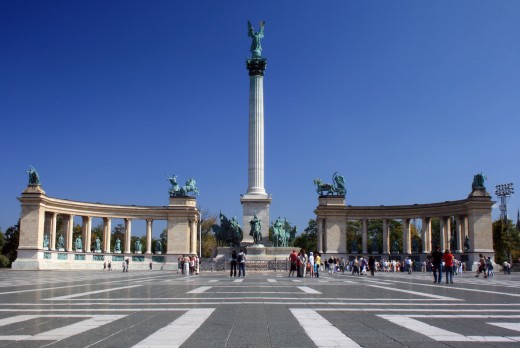
What about you?
Are you planning to visit Budapest once?
Sightseeing tour - not the usual way :)
Share your ideas!
Please feel free to comment on this hub, your feedback is very much appreciated!
Or, if you feel that you can write fresh, new ideas about this or a similar topic, just join our community and start writing!
© Copyright 2012-2014, Zsofia Koszegi-Nagy (zsobig)

Some of my latest works include:
- Kürtőskalács a.k.a. Chimney Cake, a delicious Hungarian pastry
Chimney Cake or Kurtoskalacs is an incredible Hungarian pastry that originates from Transylvania (present day Romania). Come and discover this great Cake with the help of this hub! Recipe and instructions included! - Holloko - a village from the past
Holloko is a beautiful little village in Northern Hungary. Its charming calmness and many interesting museums make Holloko a very popular place for tourists and Hungarian people as well, especially during the Easter celebrations when there are many a - Heviz - the source of life
Heviz is a very popular spa in Hungary. The Lake of Heviz is world-famous since this lake is the biggest thermal lake on the world that lies on a turf basin. Great place for some relaxation and for some medicinal bath! - Click Through Rate (CTR) Advertising Tips
This hub is an answer for a question found in the 'unanswered' section that asks: What does CTR mean exactly? What's a good CTR number? I hope this hub will answer all the questions about CTR. Take your time! - Hiding genes - the mystery of genetics
I've tried to answer an interesting question that I've found in the unanswered topic: What If A White Couple Gave Birth To A Black Baby? How Would The Wife Explain This? I hope this hub will clarify everything and will provide new, interesting info f
© 2010 Sophie
